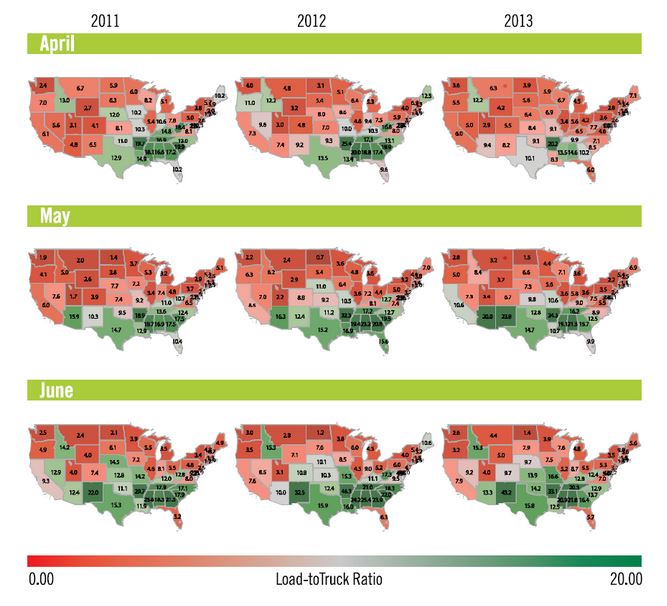Owner operator truck drivers are classified as dependent or independent contractors under the Canada Labor Code. Through obtaining classification as a self-employed worker, an owner operator truck driver can access many tax benefits over the traditional company driver. Owner operators are often responsible for expenses such as truck payments, maintenance and repairs, fuel, and parking space.
The nature of how an owner operator conducts his/her work can classify them a self-employed worker or an employee and this directly impacts Canada Revenue Agency tax requirements. Employers are commonly required to deduct Employment Insurance and Canada Pension Plan contributions from employee paychecks. However, self-employed workers do not have these benefits deducted from their paychecks. This is largely due to the reason that self-employed workers must file their own self-employment income taxes.
It is very important that the distinction that the worker is a self-employed contractor is made clear in the relationship between the employer and owner operator. This distinction will determine your owner operator tax deductions in Canada.
How to be classified as a self-employed owner operator in Canada.
The first step to ensuring you are classified as self-employed trucking contractor and to safeguard your tax privileges, is to understand how the initial work agreement has been structured.
The first step is to ensure the agreement is a contract for services not a contract of service. The latter is considered an employment contract.
The factors used to determine if the work agreement aligns with a contract for services are listed below:
- Level of control the payer exercises over the worker’s activities
- Which party provides the tools and equipment
- Whether the worker is allowed to subcontract or hire workers
- The level of financial risk endured by the workers
- The level of responsibility for investment and management the worker has
- The worker’s ability to earn a profit
- Terms used in the written contract itself
Level of control the payer exercises over the worker’s activities
A self-employed owner operator works independently. If for example, GPS tracking technology is used to monitor the O/O’s truck location, that is a potential indicator showing the worker is an employee. The owner operator should be free to take whichever route he/she wishes to and this works well when the fuel costs are paid for by the O/O. If the owner operator is not permitted to provide his/her transport services to another carrier, then they begin to appear as a worker. Furthermore, the working relationship between the owner operator and carrier must not present a level of loyalty, continuity, security, or subordination which are indicators that the O/O is an employee and not a contractor. Therefore, it is likely that most owner-operator working situations would be considered employer-employee relationships when evaluated for the degree of control the payer exercises over the worker’s activities.
Tools and equipment
When the provider of the tools and equipment is considered, the owner operator appears to be a self-employed contractor majority of the time. Lease purchase arrangements where the carrier is the party leasing a truck to the owner/operator are situations likely to be classified as an employer-employee relationship. Self-employed contractors are generally considered responsible for repair, maintenance, and insurance costs therefore it is important this is laid out in the foundation of an owner operator lease agreement.
Note: The worker supplies his/her own workspace because their truck is the primary place of work for the owner operator. He/she must pay for its parking area and the costs to maintain the equipment.
Hiring and sub-contracting workers
The owner operator arrangement should be one where the O/O can hire and send a substitution worker if he/she is not present to do the work. They should also be allowed to add more trucks to the carrier’s fleet and hire drivers to drive those trucks as long as it is under the carrier’s operating authority.
Financial risk endured by the worker
Self-employed individuals have fixed ongoing costs. These costs for an owner operator are insurance, truck payments, parking rent, and employee wages (if applicable).
Level of responsibility for investment and management
The investment and management aspect are also to be considered.
It is simple to see the owner operator has made a significant level of financial investment when they have purchased a truck.
The best way to demonstrate a business management presence is to be registered with a province as a sole proprietor. Whereas a sole proprietor is not an incorporated company, it helps to distinguish the relationship between the owner operator and the carrier. Registering as a sole proprietor owner operator in your province is the best business structure.
Ability to earn a profit
An owner operator’s opportunity to earn a profit is heavily considered when determining if the O/O is a self-employed worker or an employee. If the O/O is responsible for fixed costs that must be paid regardless of whether the truck is on the road, then the O/O is in a position to realize a loss. It is important the risk of loss is greater than their remuneration.
Independent owner operators are preferably to be compensated through a flat rate. If the owner operator is paid a flat rate and incurs expenses in order to realize the gains of that flat rate, then he or she is in a position to be classified as a self-employed worker.
Conclusion
The owner operator has much potential to realize greater profits if they are strategic with their business operations and ensure alignment with federal tax regulations. The privilege to file taxes as a business will free up immediate cash-flow for owner operators and give them access to the tools and resources that company drivers do not have. Owner operator tax deductions Canada vary from the United States, therefore this article is intended for Canadian owner operator truck drivers.




Hello, I am a company driver from Canada. I did some research on the web aboput a particular situation, but found no clear solution.. The situation is our employer (Canadian Truck Company ) has a policy on Damages that are caused in “avoidable incidents” to be paid by the driver. This is done in 2 ways
1. Either the driver pays for the repair directly while on the road
or
2. The repiar is done back at the compnay shop and the amount of the repair is deducted from the employees safety bonus.
QUESTION:
Since the employee is ultimately paying for these repairs and is not reimbursed, can he claim them on his tax return ?
Might be a good topic to add to internet blogs
Thanks
Can a cdn owner operator claim meals?